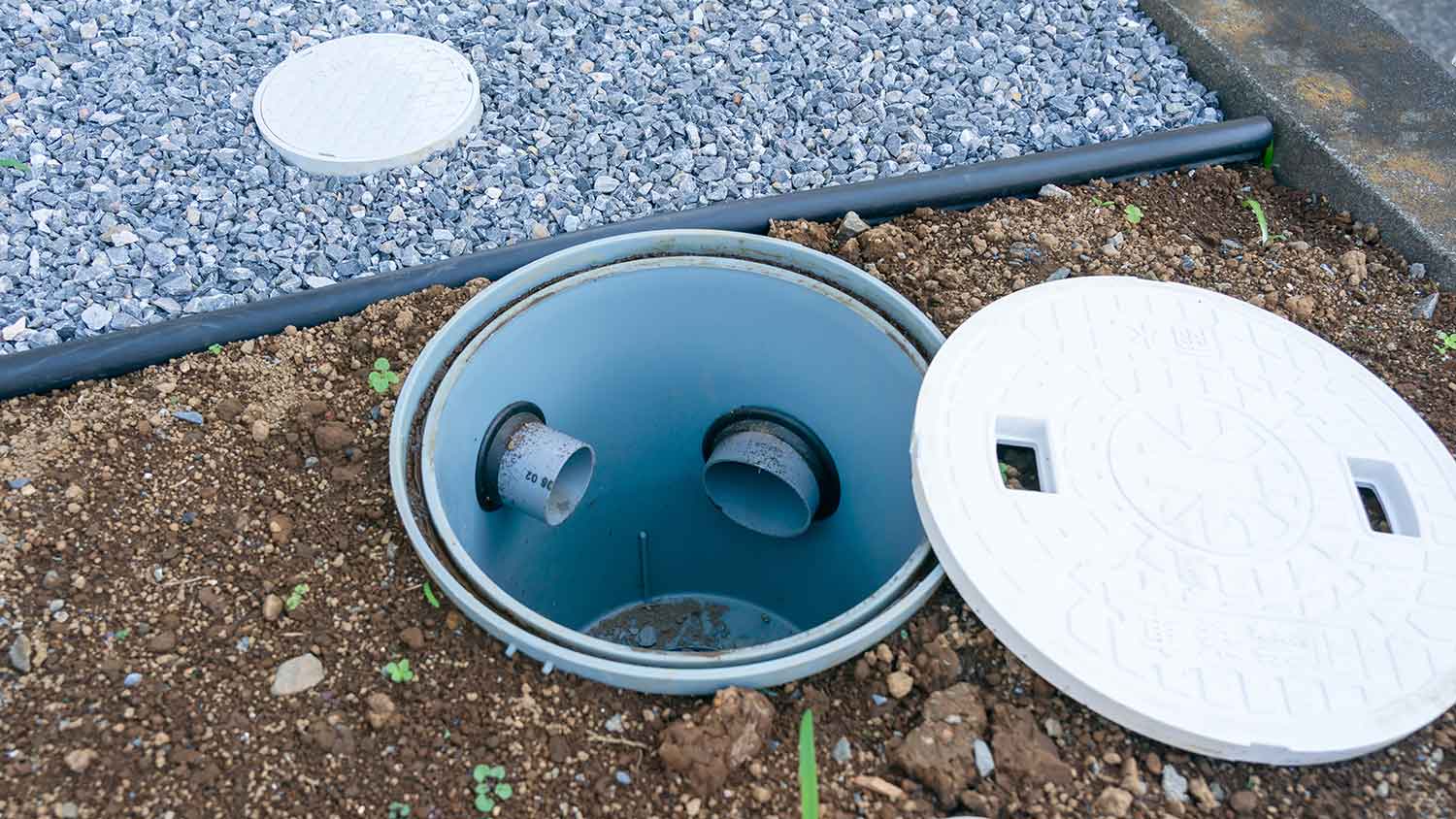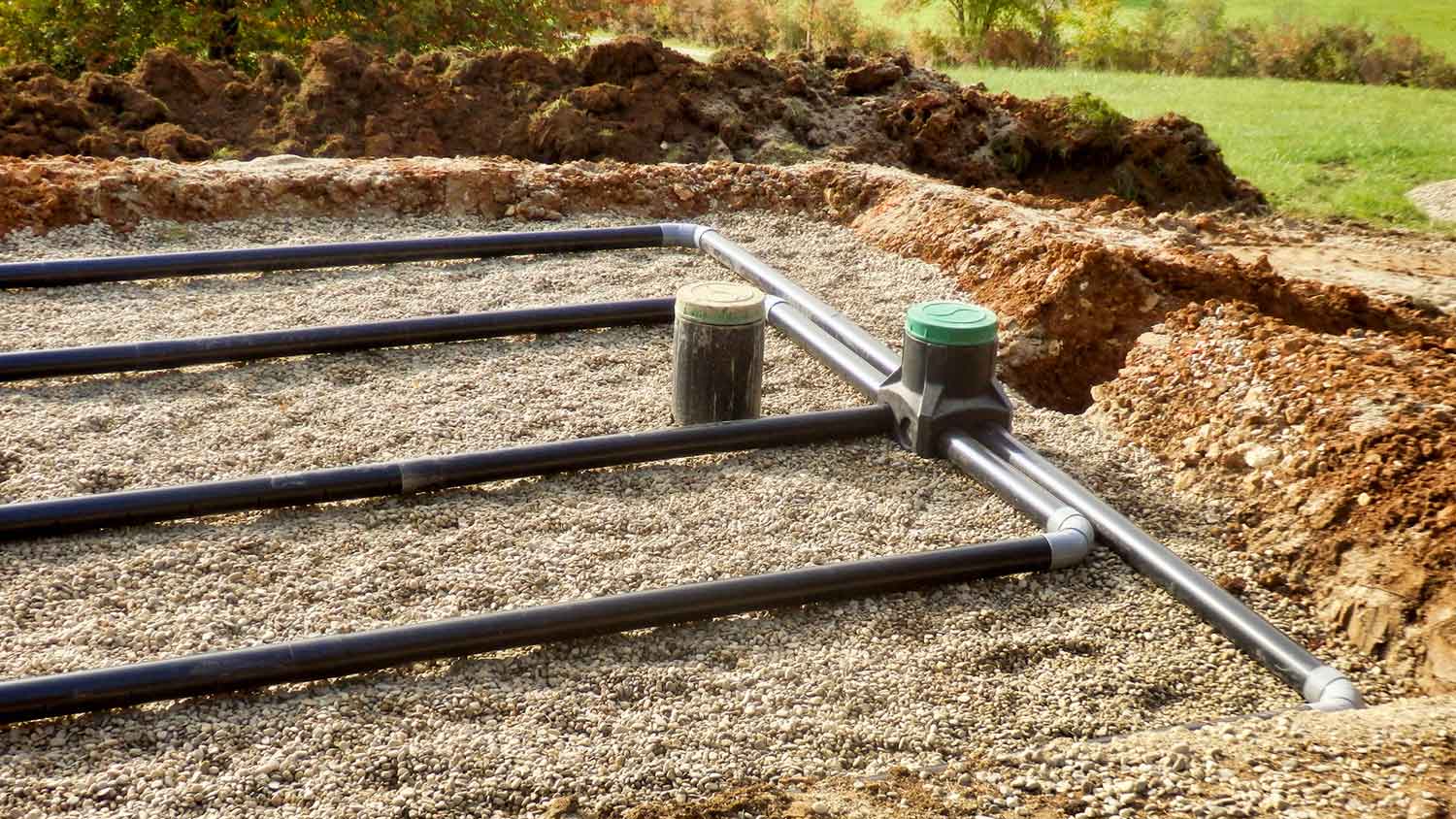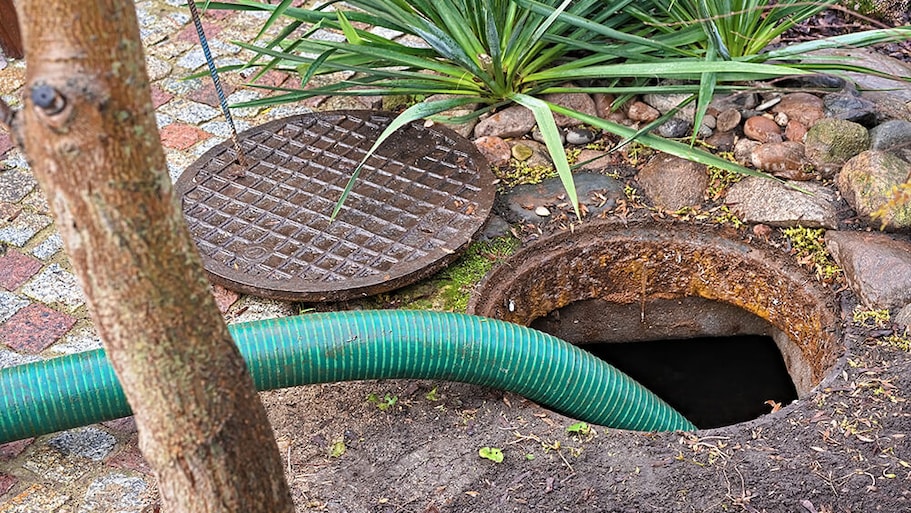What's the Difference Between a Septic Dry Well vs. a Leach Field?
Both give waste a place to go


Dry wells handle stormwater and greywater, while leach fields are for wastewater.
If you have a septic tank, you also have a leach field.
You may also need a dry well even if you have a septic.
A dry well isn't a replacement for a leach field or vice versa.
Septic systems come in all shapes and sizes, but each one has a septic tank and leach field in common. You may have also heard about a septic dry well and wondered if that's a good option for your home. Learn the differences between a dry well and a leach field to see if you need just one or both.
Septic Dry Well vs. Leach Field: Key Differences
Think of a septic dry well as an accessory that complements a leach field. It's not a replacement for a leach field but can play a supporting role in your property's water management. Dry wells are deeper in the ground than leach fields and are often surrounded by gravel. Leach fields consist of rows of pipes that seep effluent into the surrounding soil.
What Is a Septic Dry Well?

A dry well manages stormwater runoff by providing excess water a place to go. The well provides a holding area for water when the surrounding soil is saturated. As the soil dries out after a storm, water seeps out of the well into it. A septic dry well does the same, but it also handles greywater from your home.
Installing a dry well costs an average of $3,125. The final cost depends on the materials used, well size, and location on your property.
| Pros | Cons |
|---|---|
| Helps prevent flooding | Complex maintenance |
| Supports your septic system | Can cause contamination |
| Protects your foundation | Not allowed in some areas |
Best for:
Homes in rural areas that get a lot of rainfall.
Pros of a Septic Dry Well
The major benefit of a dry well is stormwater management. If you live in an area with a lot of rainfall, a dry well can help prevent flooding and ponding after a storm. It's usually located at least 10 or 12 feet from your home's foundation, so it can also protect the structural integrity of your house.
When connected to a septic system, a dry well can handle greywater from sinks, dishwashers, and washing machines, easing some of the strain on your system's leach field.
Cons of a Septic Dry Well
A major drawback of a dry well is that some areas no longer allow it to be installed as part of a household sewage treatment system. In other areas, you may need to register your well with the local environmental protection agency. The wells are often deep in the ground, which runs the risk of contaminating groundwater if there's an issue with the well.
Dry wells require ongoing maintenance, which is particularly important to limit the risk of contamination.
What Is a Leach Field?

A leach field, also known as a drain field, gives your household's wastewater a place to go. Leach fields consist of a series of pipes that allow the effluent from your home's sewage system to drain into the surrounding soil.
A leach field is installed with the rest of your septic system, and the average cost of installation is $6,000. Your total costs can vary based on the size and type of the system.
"Effluent" is the term for liquid waste or sewage that has been treated in a septic tank or sewage treatment plant. You may also know it as "wastewater."
| Pros | Cons |
|---|---|
| Limits contamination | Can flood |
| Inobtrusive | Pipes can clog |
| Long-lasting | Limits yard use |
Best for:
Pros of a Leach Field
If your home has a septic system and tank, then you need a leach field, whether it's a mound system or a sand filtration system. Leach fields can last for decades with proper care. They minimize groundwater contamination and are relatively inconspicuous—you may be standing on your home's leach field and not even know it.
Cons of a Leach Field
If something goes wrong with your septic system, you may be able to see or smell it in the leach field. When the system is overwhelmed or clogged, the leach field can become saturated, creating a muddy mess. The mud in the leach field may have a distinct, unpleasant odor.
Another drawback of a leach field is that it can limit your yard use. You can't park cars or plant trees over your leach field. It must also be at least 10 feet away from buildings or structures.
Septic Dry Well vs. Leach Field
Take a look at how a dry well stacks up to a leach field.
Ease of Installation: Leach field
Both a dry well and a leach field should be professionally installed, by a local septic tank company. However, since leach fields are standard and dry wells are less common, you'll have better luck finding a company that will install a drain field rather than a dry well.
In either case, the installation should follow local codes and regulations.
Cost: Leach field
While installing a leach field technically has a higher price tag, remember that you can't have a septic dry well without a septic system. So in the long run, installing just a leach field will cost you less than installing a leach field and dry well.
Ease of Repair: Leach field
Repairing a leach field may involve calling a septic tank company and having them pump your septic tank. Dry wells may also need the occasional cleanout, but since they are deeper in the ground, they can be much harder to access.
In some cases, you can DIY leach field repair by adding enzymes to your septic tank to help improve drainage and prevent saturation.
Length of Life: Leach field
Both a dry well and a leach field can have a long, happy life with the right maintenance and care. A dry well can last for up to 30 years, and a leach field can last for as long as 50, so it has a slight edge here.
Eco-Friendliness/Sustainability: Tie
Dry wells can help to manage excess stormwater, giving them an eco-friendly edge. Leach fields prevent harmful waste from seeping into the groundwater or contaminating local waterways. Both need to be installed and constructed according to local codes and environmental regulations.
















